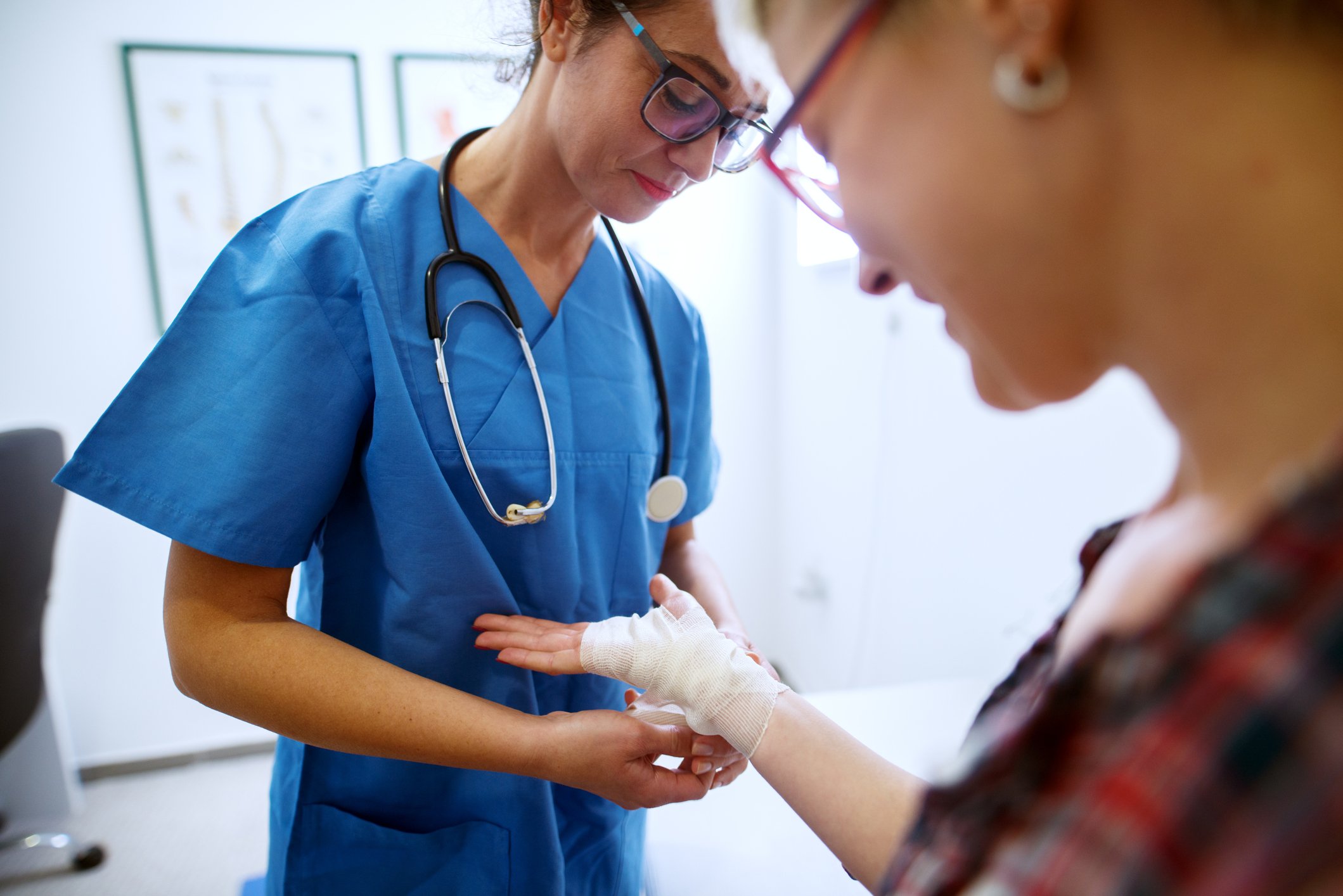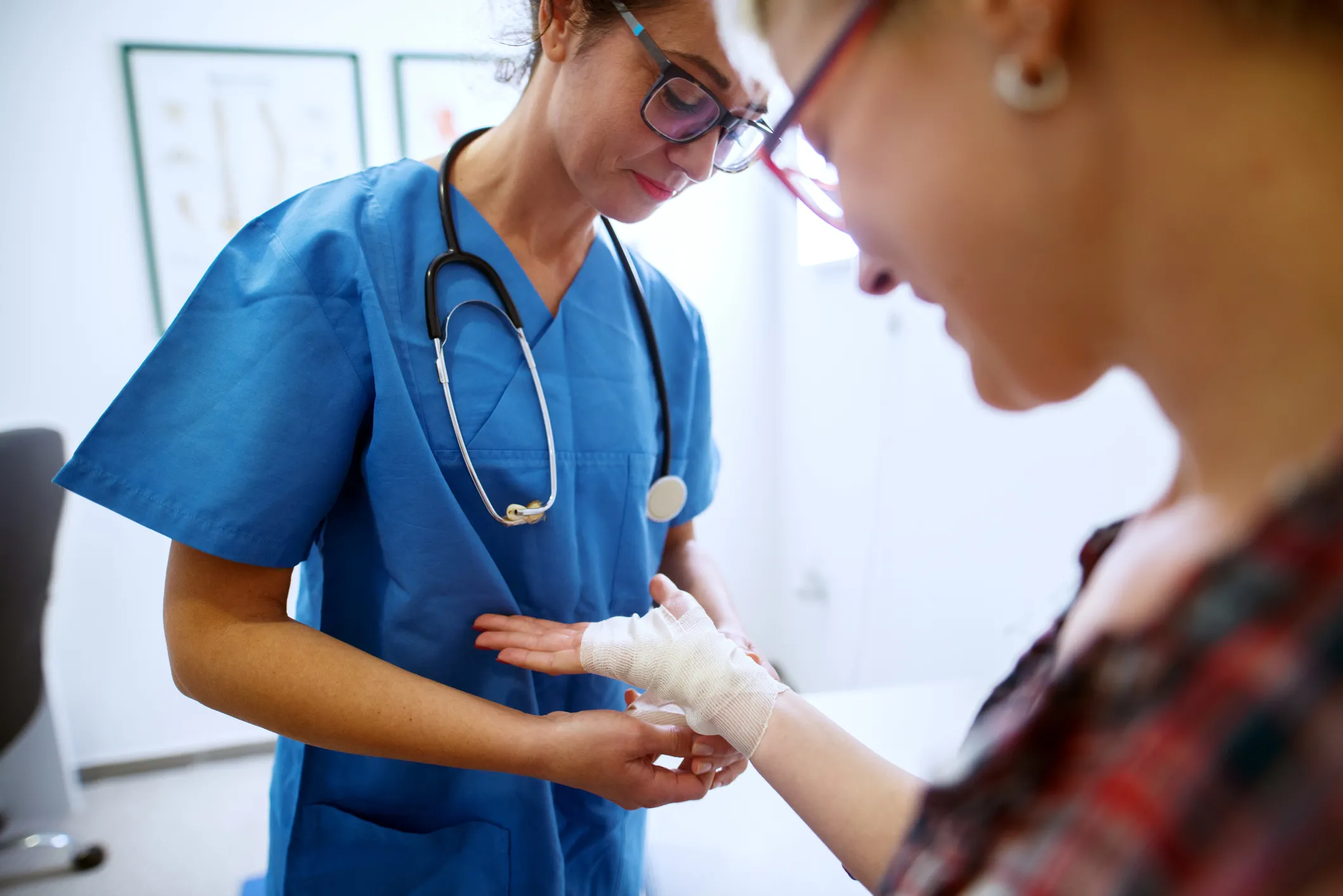Four Key Factors that Improve Healing Rates in Wound Care
Continuously assessing our wound care techniques.
We continuously assess the effectiveness of our treatments, analyzing each wound’s healing progress with one of the largest wound care databases in the world to look for ways to improve healing rates.

Recently, a four-part research series published by Healogics identified four factors that impact overall patient outcomes and healing rates. Understanding these factors can help people living with non-healing wounds and the people who care for them. These four factors are frequent wound care visits, early intervention of wounds where healing has stalled, engaging patients in their care, and using advanced care modalities, including debridement.
1. Frequent wound care visits improve healing rates.
Most wounds need consistent care and our data shows patients seen frequently at a Wound Care Center have a higher healing rate. Wound care providers should explain the importance of consistent care. Patients should commit to follow their plan of care and keep every scheduled appointment.
2. Wounds may stall or stop healing but can be helped.
As many as 27% of wounds may stall or stop healing during treatment. Be aware that arterial ulcers, pressure ulcers or radiation ulcers are more likely to stall. Early intervention can get healing back on track and help prevent infection. If you or someone you care for shows signs of infection, including fever or increased pain and redness near the wound, call your Wound Care Center immediately.
3. Patients who are committed to their plan of care have improved healing rates.
Studies show that patients who have a positive attitude have higher healing rates. Providers should provide encouragement and get to know the people under their care. People living with chronic wounds should take an active role in their own care and keep their appointments. Patients who frequently cancel appointments are at greater risk of quitting treatment altogether.
4. Advanced wound care modalities, including debridement, help wounds heal faster.
Debridement removes dead tissue from wounds to prevent infection and help new cells grow. In wounds that have stalled, the healing rate improves if the wound is debrided within 14 days of stalling.
Wound Care Centers provide specialized treatments that can help wounds heal faster including debridement, negative pressure therapy, pressure-relief devices, wound dressings, compression therapy, tissue-based products and hyperbaric oxygen therapy.

Dr. Anthony Viol is a board-certified plastic surgeon and a Medical Director at Chesapeake Regional Medical Center’s Advanced Wound Care & Hyperbaric Center. Dr. Viol received his medical degree from Eastern Virginia Medical School in Norfolk, Va., where he also completed a residency program in general surgery. He completed a fellowship in plastic surgery at Duke University in Durham, N.C. and has vast experience caring for slow-to-heal wounds and the surgical treatment of skin concerns.